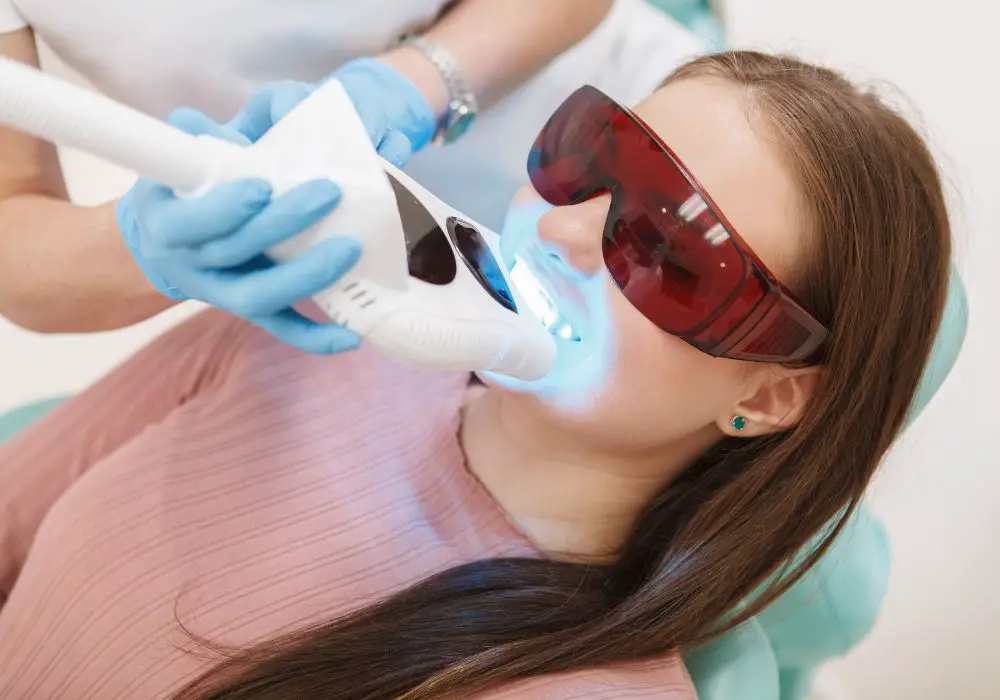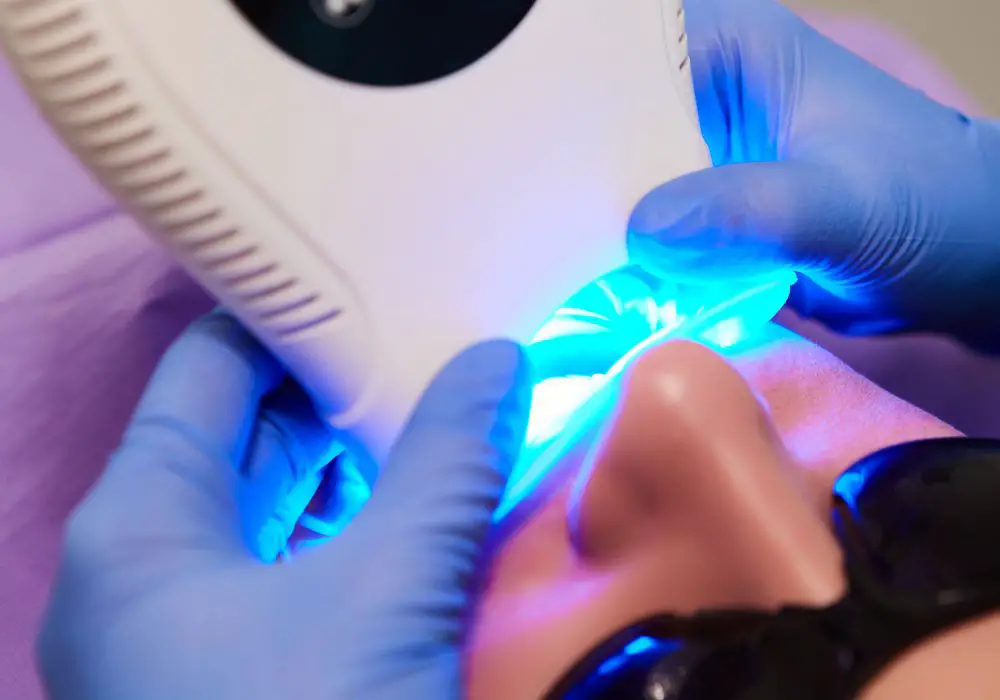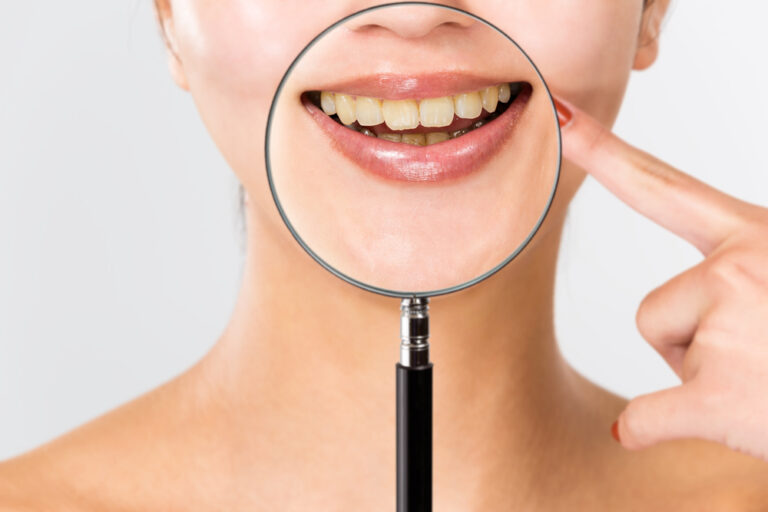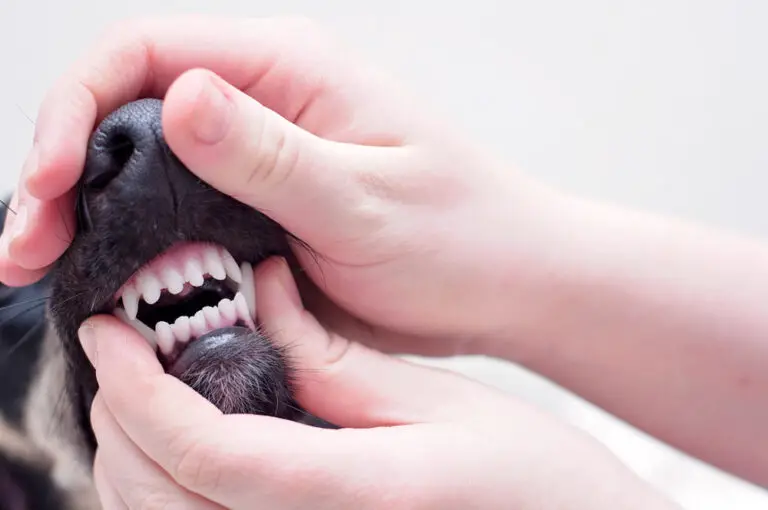Teeth whitening has become an increasingly popular cosmetic treatment used to improve the color and appearance of teeth. From in-office procedures to at-home whitening kits, various options exist to make teeth look whiter and brighter. However, in some cases, teeth whitening does not produce the desired results and can temporarily or permanently make your teeth look worse. This article explores the reasons why teeth may look worse after undergoing whitening treatment and what can be done to fix or prevent this problem.
How Teeth Whitening Works

Before examining why whitening can backfire, it helps to understand what the treatment does. Teeth whitening aims to lighten the intrinsic, internal color of the tooth. It does not remove external stains from food, drinks or habits like smoking.
Whitening products use carbamide or hydrogen peroxide as the main active ingredient. When applied to the teeth, these peroxide solutions penetrate the enamel and dentin layer. They react with organic matter and break down larger pigmented molecules.
Specifically, hydrogen peroxide acts as a bleaching agent to oxidize and clear out darker chromogens. This lightens the innate yellowish-grey tones to produce whiter looking teeth.
Reasons Teeth May Appear Worse After Whitening
Despite making teeth brighter overall, several factors can cause teeth to look worse temporarily or permanently after undergoing whitening.
Initial Strange Appearance
Right after a whitening procedure, teeth often take on a chalky, frosted look. The peroxide gel causes temporary dehydration and alters light refraction in the enamel. Teeth can appear whitish-blue, opaque and feel rough.
This immediate strange appearance after whitening is temporary. It begins improving within a few hours as the enamel rehydrates and returns to normal translucency.
Increased Sensitivity
The most common side effect of teeth whitening is increased tooth sensitivity and gum irritation. This is due to the peroxide agent penetrating the enamel and dentin.
Many people experience mild to moderate sensitivity and gum soreness during the first 24-48 hours after whitening. Inflamed, red gums and pain from hot or cold food and drinks can make teeth look more unappealing.
This sensitivity eventually subsides within a few days for most people. Proper treatment technique, brushing with desensitizing toothpaste, avoiding trigger foods and using OTC pain relievers helps resolve it faster.
Rebound Effect
This refers to when the teeth appear much whiter immediately after the bleaching treatment, but then start to look darker again within 2-14 days.
The outer enamel lightens quickly with whitening but the inner dentin layer, pulp tissue and roots do not whiten as much. These inner structures rebound and result in less contrast with the enamel surface.
Teeth may then look more yellowish or dull within the first two weeks after treatment as the rebound effect starts to happen. But this phenomenon stabilizes after 1-2 weeks when the teeth reach their new intrinsic color.
Increased Appearance of White Spots
Whitening cannot remove white spots or areas of hypocalcification. These opaque chalky spots are caused by mineral loss while the teeth were developing under the gums.
While whitening does lighten the surrounding enamel, it reveals these pre-existing white spots even more. The newly whiter enamel contrasts against the pale white spots and makes them stand out.
Thinner Enamel Shows Through
Some people naturally have thinner, more translucent enamel. When whitened, the brighter white enamel contrasts more sharply with the yellowish dentin underneath.
This makes the teeth appear more yellow overall after the treatment since the thinner enamel does little to block out the inner color.
Yellow Stains Remain
Since whitening only lightens innate tooth color, any extrinsic stains will remain. Coffee, tea, red wine, smoking and other sources often stain the enamel surface yellow or brown.
These surface stains will not lighten as much with whitening. So teeth may still appear yellowish or spotted after treatment since the stains are unchanged.
Gum and Root Exposure
Receding gums from periodontal disease or thin gingiva can expose vulnerable root surfaces. Since roots do not contain enamel, they do not whiten well.
Exposed yellowish roots against whiter enamel after bleaching can make teeth look streaked and stained. Gum grafts to cover roots again results in a more uniform appearance.
Increased Transparency Around Edges
Whitening makes the edges of the teeth along the gumlines more transparent. This reveals more of the darker dentin color underneath making teeth look darker in those areas.
Crowning or veneers may be needed to cover over new transparency that occurs after bleaching procedures.
How Long Effects Last

The initial strange look after whitening resolves within a few hours. Gum irritation and general sensitivity tends to fade within 1-3 days.
The post-treatment rebound effect lasts 1-2 weeks maximum before the true color stabilizes.
For some people, tooth and gum sensitivity can linger for up to a month or longer after whitening. This usually responds to desensitizing treatments and should not cause permanent damage.
White spots and transparent edges are permanent effects of whitening. Other stains and imperfections may start to reappear in a matter of weeks to months.
Overall, professional in-office whitening results last on average 6 months to 3 years. While take-home whitening tray results can last 6 months to 5 years with proper maintenance.
Solutions For Teeth Looking Worse After Whitening
If tooth whitening seems to worsen appearance due to sensitivity, stains returning or making flaws stand out, there are solutions:
Repeat Whitening Treatments
Doing multiple rounds of whitening 2-4 weeks apart allows better lightening of the inner tooth layers. This provides more uniform results all around.
Professional Cleanings
Thorough professional cleaning removes external stains not affected by whitening. This can greatly improve the look of remaining yellow spots against whiter teeth.
Enamel Bonding
Bonding agents applied to the teeth can mask intrinsic flaws like white spots, translucencies and uneven color. The material bonds to the enamel for seamless coverage.
Dental Veneers
These thin tooth-colored shells of porcelain or composite resin are bonded over the front of teeth. Veneers mask flaws and recreate brighter, more uniform natural looking smiles.
Crowns
Like veneers, dental crowns fully cover teeth to hide flaws and discoloration. They are used for protecting and capping teeth rather than just improving appearance.
Root Canal Treatment
For those with prolonged sensitivity and pain after whitening, a root canal may be needed to remove inflamed pulp tissue. This resolves sensitivity permanently.
Gum Grafts
Gum recession that exposes ugly yellow roots can be covered up again with soft tissue grafts. This allows for a more attractive smile.
Best Practices for Whitening Teeth

While whitening side effects are usually temporary, you can follow these tips to maximize results and prevent the teeth from looking worse:
- Visit your dentist for an exam and cleaning before whitening. Identify causes of discoloration.
- Have custom take-home whitening trays fabricated by your dentist for best results and safety.
- Start will lower concentrations of whitening gel to minimize sensitivity.
- Apply desensitizing agent before and after whitening sessions.
- Avoid highly colored foods and beverages right after whitening.
- Rinse with warm salt water to relieve gum irritation.
- Use fluoride treatments to strengthen enamel after whitening.
- If necessary, consider bonding, veneers or other cosmetic treatments to fix flaws after whitening.
- Maintain results with occasional whitening touch-ups as needed.
Follow proper technique and consult your dentist if whitening worsens appearance of your teeth. In most cases, the side effects are temporary and teeth will stabilize in color within 1-2 weeks. While whitening makes teeth brighter overall, it may not cover over existing flaws. Additional cosmetic treatments can address these issues for a picture perfect smile.
Frequently Asked Questions
1. Why do my teeth look yellow after whitening?
Teeth may take on a yellowish cast after whitening due to the rebound effect and intrinsic color re-emerging. Stains not removed by whitening also stand out more against lighter enamel. Give it 1-2 weeks to see the final shade.
2. How long does sensitivity last after teeth whitening?
Tooth and gum sensitivity from peroxide gel typically resolves within a few days up to 1 week. In some cases, moderate sensitivity may persist for 1-2 months before fading. This can be managed with OTC remedies.
3. What causes white spots on teeth after whitening?
Whitening reveals more of the existing white spots and areas of hypocalcification. It does not cause them. These white marks often need cosmetic treatment like veneers to cover after whitening.
4. How can I whiten teeth with receding gums?
Whitening alone will not cover yellow exposed roots from gum recession. You may need grafts to cover them again or veneers to mask the discoloration. Overall gum health helps stabilize recession.
5. Why didn’t whitening remove my stains completely?
Whitening only lightens innate tooth color. Old restorations, fillings and external stains from habits do not lighten as much. Professional cleaning before whitening optimizes results.
Conclusion
While tooth whitening aims to enhance smiles by lightening enamel, the treatment has its limitations. It cannot remove all extrinsic stains or cover over existing tooth flaws. Rather, whitening may emphasize yellow tones, white spots, translucency, recession and old restorations. Combining professional cleaning, masking treatments, gingival grafting and routine whitening maintenance helps maximize results. With reasonable expectations of the process, teeth whitening can still effectively produce whiter, brighter smiles.






